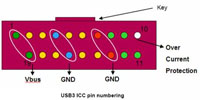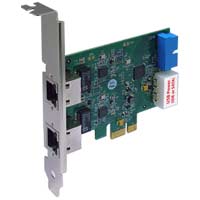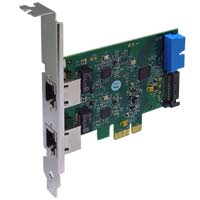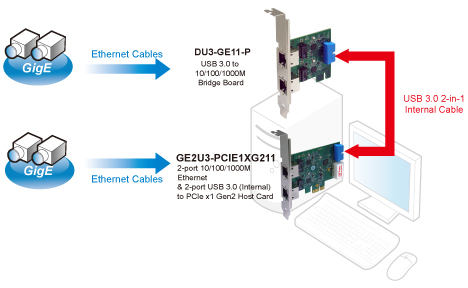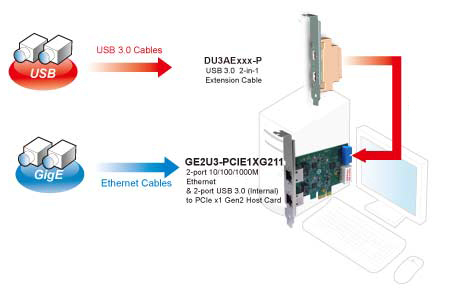The GE2U3-PCIE1XG211 is 2-port 10/100/1000M Ethernet & 2-port USB 3.0 (Internal) to PCI Express x1 Gen 2 Host Card.
GE2U3-PCIE1XG211 is designed with Two key components.
- PCI Express to USB 3.0 Single Chip Host Controller (FRESCO FL1100; USB IF TID 380000026).
- Two 10/100/1000M Ethernet to USB 3.0 Bridge Controllers (Realtek RTL8153-VB; USB IF TID 310000126).
It fully integrates an Extensible host Controller Interface (xHCI) engine, a 4-port (2 for 10/100/1000M Ethernet Bridges + 2 Internal) 5Gbps USB 3.0 transceiver, a PCI Express endpoint controller and a 5Gbps PCI Express transceiver. GE2U3-PCIE1XG211 implements the Universal Serial Bus 3.0 Specification Revision 1.0 and the Extensible Host Controller Interface (xHCI) Specification Revision 1.0, and complies with the PCI Express Rev 2.1 Specification at 5Gbps data rate, and the PCI Local Bus Specification Revision 2.2. GE2U3-PCIE1XG211 is backward compatible for operation with USB 2.0 and USB 1.1 devices.
The GE2U3-PCIE1XG211 features GoXtream™ xHCI Accelerator Engine, which maps the xHCI standard directly into a set of parallel functional units, providing acceleration of all xHCI operations while maintaining compatibility with existing software driver models.
The 10/100/1000M Ethernet controller combines an IEEE 802.3u compliant Media Access Controller (MAC), USB 3.0 bus controller, and embedded memory. With state-of-the-art DSP technology and mixed-mode signal technology, it offers high-speed transmission over CAT 5 UTP cable or CAT 3 UTP (10Mbps only) cable. Functions such as Crossover Detection and Auto-Correction, polarity correction, adaptive equalization, cross-talk cancellation, echo cancellation, timing recovery, and error correction are implemented to provide robust transmission and reception capabilities.
GE2U3-PCIE1XG211 is fully compliant with Microsoft NDIS5, NDIS6 (IPv4, IPv6, TCP, UDP) Checksum
features, and supports IEEE 802 IP Layer 2 priority encoding and IEEE 802.1Q Virtual bridged Local
Area Network (VLAN). The above features contribute to lowering CPU utilization, especially benefiting
performance when in operation on a network server. |

